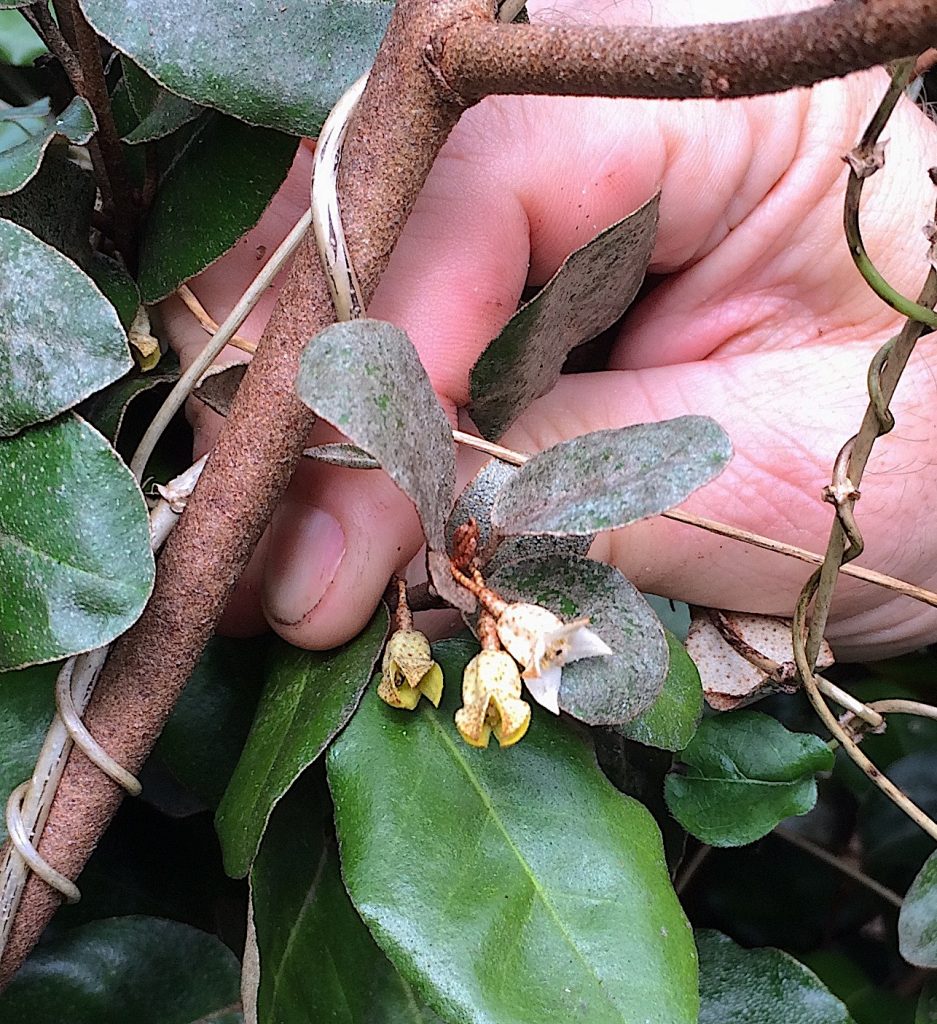
Silverthorns are blossoming now, a few weeks early.
Foragers benefit from bad ideas. One of those is taking plants from one place on earth to a distant location. We harvest and eat a lot of local plants that came from somewhere else. One of them is so far from home that it fruits in February and is blossoming now.
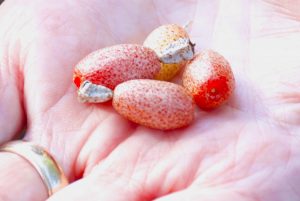
Silverthorns ripen around Valentine’s Day.
The Silverthorn is native to Southeast Asia. It came to North America as an ornamental about 200 years ago. Early botanists were sure it would not become an invasive pest because they said the fruit were not nutritious for birds. Thus the birds would not eat them and spread the seeds around. The problem is no one told the birds that (and if birds did not spread the seeds around in Asia, what did?) In some areas the Silverthorn is an invasive species and forbidden. In other areas it is still sold as an ornamental. We call it tasty.
While the Silverthorn fruits around February December is the usual time to be looking for the shrub and blossoms. As the photo says above, this year they blossoms are early (a lot of species are. Is that a prediction of an early cold winter?) Silverthorn hides the blossoms and they are a bit strange looking, if not futuristic. The four-petaled speckled blossom turns into a red jelly bean-like fruit with gold and silver speckles. They are bitter and sour until ripe whereupon they become sweet and delicious. The shelled seed is also edible though on the bitter side. Altogether the fruit is high in vitamin C, lycopene, and Omega 3 fatty acids. And that is a tasty treat in the middle of winter. To read more about the Silverthorn go here.
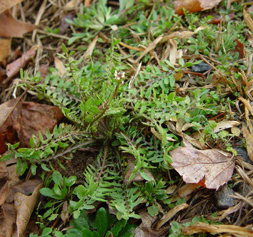 Next there is a little mustard mystery. Locally it’s the time of year for a variety of small members of the mustard family. There is one mustard I see from north central Florida to West Palm Beach (it is also scattered about the United States.) I think it’s Sibara virginica aka Virginia Rock Cress. It’s a bit of a moot debate in that all members of the family are edible so if you can identify the genus the exact species is not necessary. Rock Cress reminds me of Swine Cress except their seeds are different shapes, small round seeds with the Swine Cress, long toothpick like seeds of Rock Cress. Their flavors are similar, however. To read more about many little mustards go here.
Next there is a little mustard mystery. Locally it’s the time of year for a variety of small members of the mustard family. There is one mustard I see from north central Florida to West Palm Beach (it is also scattered about the United States.) I think it’s Sibara virginica aka Virginia Rock Cress. It’s a bit of a moot debate in that all members of the family are edible so if you can identify the genus the exact species is not necessary. Rock Cress reminds me of Swine Cress except their seeds are different shapes, small round seeds with the Swine Cress, long toothpick like seeds of Rock Cress. Their flavors are similar, however. To read more about many little mustards go here.
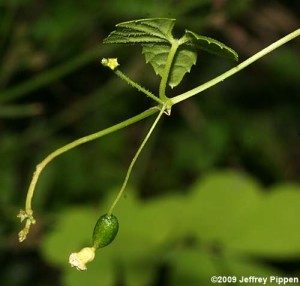
Creeping Cucumber keeps fruiting in south Florida.
Creeping Cucumber fruits until cold weather so it’s time to find them now as winter is about to visit us. We picked some this past weekend during my foraging class in Sarasota. Get ’em while you can. As they grow from seeds their start in spring is not as predictable as from a root. They also move around. A spot that is heavy with them this year can be light next year though there is usually a concentration of them nearby, just slightly moved. And, one you find one vine you if you look around it you’ll usually find more. Known botanically as Melothria pendula they are slightly tart jelly-bean size cukes. Some folks call them “mouse cucumbers.” They’re a great trail-side nibble and good in salads. Also called the Guadeloupe Cucumber they, unfortunately, do not pickle well. To read more about them go here.

Foraging classes are held rain, shine, hot or cold. Photo by Nermina Krenata
The weather should moderate by the weekend though Saturday might be a bit rainy. Hitting both coasts, Melbourne Saturday and Port Charlotte Sunday.
Saturday, December 1st, Wickham Park: 2500 Parkway Drive, Melbourne, FL 32935-2335. 9 a.m. to noon. Meet at the “dog park” inside the park.
Sunday, December 2nd, Bayshore Live Oak Park, Bayshore Drive. Port Charlotte. 9 a.m to noon, meet at the park across from Ganyard Street. THIS CLASS WILL NOT MEET AND WILL BE RESCHEDULED.
Saturday, December 8th, Florida State College, south campus, 11901 Beach Blvd., Jacksonville, 32246. 9 a.m. to noon. We will meet at building “D” next to the administration parking lot.
Sunday, December 9th, this class will probably be in Largo, Florida, but at a different location than usual. Site TBA.
 Donations to upgrade EatTheWeeds.com and fund a book have gone well. Thank you to all who have contributed to either via the Go Fund Me link, the PayPal donation link or by writing to Green Deane POB 941793 Maitland FL, 32794. There are many needs left such as expanding the foraging teacher page and the page on monotypic edibles. Several functions were also lost when we transitioned to the new website. I’m still having a hard time finding articles I wrote! There’s always something and such things get more complex and expensive every year.
Donations to upgrade EatTheWeeds.com and fund a book have gone well. Thank you to all who have contributed to either via the Go Fund Me link, the PayPal donation link or by writing to Green Deane POB 941793 Maitland FL, 32794. There are many needs left such as expanding the foraging teacher page and the page on monotypic edibles. Several functions were also lost when we transitioned to the new website. I’m still having a hard time finding articles I wrote! There’s always something and such things get more complex and expensive every year.
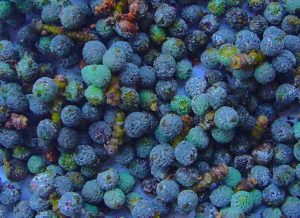
Southern Wax Myrtle Berries. Photo by Green Deane
Just because you can do something doesn’t mean you should. Can you make a bayberry candle? Absolutely. Should you? If you have to, yes. If not you might want to reconsider. Southern Wax Myrtle berries are small. They have a little wax on them and why the species name is cerifera — wax producing. But it takes many gallons and a lot of hot work to get enough bayberry wax to mix with tallow (75/25) to make the famous smokeless candle that keeps away insects. No doubt hundreds of years ago it was worth it. Not so much today. But, you can use the dried berries as a spice and the leaves like bay leaves or to make a tea. But you should avoid the species if you are pregnant. To read more about the Southern Wax Myrtle go here.
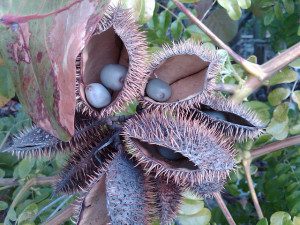
Do you know what these are? You would if you read the Green Deane Forum.
Suffering from foraging withdrawal during the colder months? There is a cure and it’s free: The Green Deane Forum. There may be snow on the ground but the conversations are warm and there’s something for every level of forager. We talk about harvesting wild food every day of the year, swapping everything from harvesting tips to recipes to places to find wildedibles. The forum is also a great place to post photos you took of plants you can’t identify. They might be edible or medicinal. Instead of struggling with the internet let our experienced members help you nail down those elusive identifications. You can also read up on food preservation techniques that don’t require you to go out in the cold. Recent post include Maybe Ringless Honey Mushrooms? Orange Helicopter with Red Dangling Lobes, Yellow Orange Round Fruits Near River, and Five-Minute English Muffin This Time With Beautyberries. To visit or join the Green Deane Forum click on the button above “categories” on the right hand side of this page.
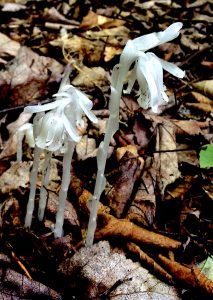
Ghost Pipes can also be cranberry to plum colored. Photo by Green Deane
Several plants were called “Indian Pipes” where and when I was growing up. One of them is the Monotropa uniflora. Living more like a mushroom than a plant it sprouts up in various edibility conversations. It helps focus the issue on exactly what “edibility” means. Other than allergies, edibility does imply it will not kill you or harm you in any significant way. But “edibility” does not have to imply tasty. As Forager Emeritus Dick Deuerling used to say “there are a lot of edible plants. I only eat the good stuff.” There are also things that are just too woody or bitter to eat more than a sample of but are included in “edible.” And some plants have to be prepared correctly to be “edible.” Is the Monotropa uniflora edible? Yes. Does it taste good? Only if you’re really hungry. But that is understandable. The list of edible plants has to include everything from incredibly delicious food to only-if-I-were-starving food. Indian Pipes are closer to the famine food end of that list. You can read more about the Monotropa here.

Green Deane DVD set of 135 videos. Great Christmas gift.
All of Green Deane’s videos are available for free on You Tube, and more are on the way. They do have ads on them so every time you watch a Green Deane video I get a quarter of one cent. Four views, one cent. Not exactly a large money-maker but it helps pays for this newsletter. If you want to see the videos without ads and some in slightly better quality you can order the DVD set. It is nine DVDs with 15 videos on each for a total of 135 videos. Many people want their own copy of the videos or they have a slow service and its easier to order then to watch them on-line. The DVDs make a good gift for that forager you know especially on long, cold winter months. Individual DVDs can also be ordered or you can pick and choose. You can order them by clicking on the button on the top right hand side of this page (if your window is open wide enough.) Or you can go here.
This is weekly issue 332.
If you would like to donate to Eat The Weeds please click here. Or you can use my Go Fund Me link, or by writing to Green Deane POB 941793 Maitland FL, 32794

